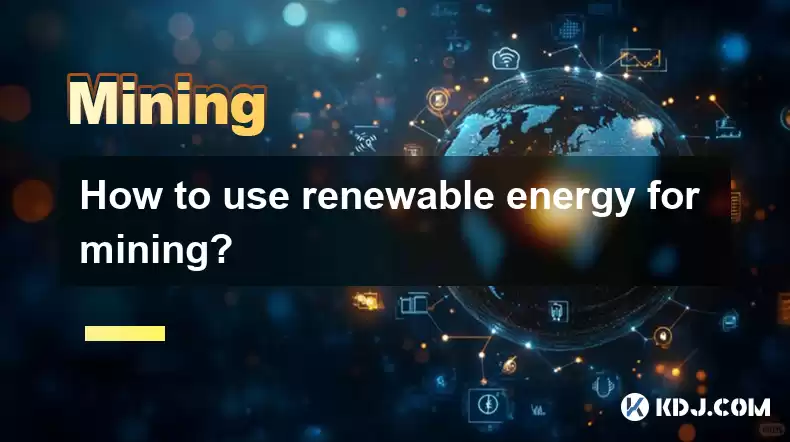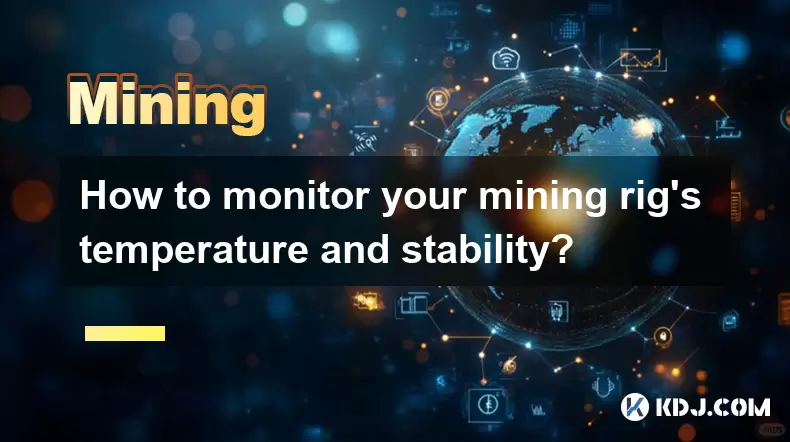-
 Bitcoin
Bitcoin $116400
-0.36% -
 Ethereum
Ethereum $4033
3.40% -
 XRP
XRP $3.302
-1.26% -
 Tether USDt
Tether USDt $1.000
-0.02% -
 BNB
BNB $796.1
1.67% -
 Solana
Solana $177.8
1.89% -
 USDC
USDC $0.9999
0.00% -
 Dogecoin
Dogecoin $0.2314
4.09% -
 TRON
TRON $0.3381
0.14% -
 Cardano
Cardano $0.7989
1.22% -
 Stellar
Stellar $0.4496
-1.84% -
 Chainlink
Chainlink $20.42
9.42% -
 Hyperliquid
Hyperliquid $41.17
0.88% -
 Sui
Sui $3.914
3.77% -
 Bitcoin Cash
Bitcoin Cash $584.7
1.52% -
 Hedera
Hedera $0.2632
-0.54% -
 Avalanche
Avalanche $24.09
3.40% -
 Ethena USDe
Ethena USDe $1.001
-0.02% -
 Litecoin
Litecoin $123.2
1.33% -
 Toncoin
Toncoin $3.318
-0.04% -
 UNUS SED LEO
UNUS SED LEO $8.984
-0.05% -
 Shiba Inu
Shiba Inu $0.00001323
2.85% -
 Uniswap
Uniswap $10.90
4.41% -
 Polkadot
Polkadot $3.999
3.34% -
 Dai
Dai $1.000
0.01% -
 Cronos
Cronos $0.1630
9.64% -
 Bitget Token
Bitget Token $4.484
0.82% -
 Monero
Monero $272.4
2.44% -
 Pepe
Pepe $0.00001173
6.03% -
 Aave
Aave $290.8
2.88%
How to use renewable energy for mining?
Renewable energy sources, such as solar, wind, and geothermal, offer significant cost savings, environmental benefits, and reputational advantages for mining operations.
Feb 24, 2025 at 05:36 pm

Key Points:
- Benefits of renewable energy for mining
- Types of renewable energy sources for mining
- Best practices for implementing renewable energy mining
- Challenges and potential solutions for renewable energy mining
- Costs and payback periods for renewable energy mining systems
- Case studies of successful renewable energy mining operations
- Latest trends and advancements in renewable energy mining
How to Use Renewable Energy for Mining
1. Benefits of Renewable Energy for Mining
- Reduced operating costs: Renewable energy sources, such as solar and wind power, generate electricity at a much lower cost than traditional fossil fuels. This can significantly reduce operating expenses for mining operations.
- Improved environmental sustainability: Renewable energy mining is a much cleaner alternative to fossil fuel-powered mining. It produces zero greenhouse gas emissions, reducing the environmental impact of mining operations.
- Enhanced reputation and social acceptance: With the growing public concern over climate change, mining companies that embrace renewable energy can enhance their reputation and improve their social acceptance.
- Increased government incentives: Governments worldwide are implementing incentives, such as tax breaks and subsidies, to encourage renewable energy adoption in the mining sector.
2. Types of Renewable Energy Sources for Mining
- Solar energy: Solar panels convert sunlight into electricity, which can power mining operations during daylight hours.
- Wind energy: Wind turbines harness the kinetic energy of the wind to generate electricity, which can be used to power mining equipment 24/7.
- Hydroelectricity: Hydroelectric dams generate electricity by capturing the energy of flowing water, making them a suitable option for mining operations near rivers or reservoirs.
- Geothermal energy: Geothermal plants extract heat from the Earth's interior to generate electricity, which can be used for mining even in remote areas.
3. Best Practices for Implementing Renewable Energy Mining
- Assess energy needs: Determine the electrical power requirements of the mining operation, including peak and average loads.
- Identify suitable renewable energy sources: Consider the availability and cost-effectiveness of different renewable energy sources in the mining location.
- Design and install renewable energy systems: Install solar panels, wind turbines, or other renewable energy systems according to industry best practices and safety regulations.
- Integration with existing grid: Connect renewable energy systems to the existing electrical grid to ensure reliable power supply and minimize downtime.
- Monitor and optimize performance: Regularly monitor the performance of renewable energy systems and make adjustments as needed to maximize efficiency and minimize costs.
4. Challenges and Potential Solutions for Renewable Energy Mining
- Initial capital investment: Renewable energy systems can be expensive to purchase and install, especially for large-scale mining operations.
- Intermittency of renewable energy: Solar and wind energy are intermittent sources, which means they are not always available. This requires backup power sources or grid integration for reliable operation.
- Geographic limitations: Some mining operations are located in remote areas with limited access to renewable energy sources.
- Government regulations: Mining companies need to comply with local regulations and permitting requirements for renewable energy installations.
Potential Solutions:
- Financing options: Explore financing options, such as loans or grants, to reduce the financial burden of renewable energy investments.
- Energy storage systems: Install batteries or other energy storage devices to store excess renewable energy for later use during intermittencies.
- Grid interconnection: Connect to the electrical grid to access additional power sources when needed.
- Collaboration and R&D: Work with renewable energy providers, universities, and research institutions to develop new technologies and solutions for renewable energy mining.
5. Costs and Payback Periods for Renewable Energy Mining Systems
The cost of renewable energy mining systems varies depending on the size and type of equipment used, as well as the location of the operation.
- Solar energy: Solar panels typically cost between $0.50 and $1.50 per watt of installed capacity.
- Wind energy: Wind turbines cost between $1,000 and $2,500 per kilowatt of installed capacity.
- Hydroelectricity: Hydroelectric dams are more complex and expensive to build, with costs ranging from $5 million to $50 million per megawatt of installed capacity.
Payback periods for renewable energy mining systems vary depending on the cost of energy in the mining location and the amount of energy generated by the system.
- Typically, payback periods for solar and wind energy systems range from 5 to 10 years.
- Hydroelectric dams have longer payback periods, but they can also generate power for a longer period of time.
6. Case Studies of Successful Renewable Energy Mining Operations
- Solargiga's solar-powered mining farm in China: Solargiga has built a large-scale solar-powered mining farm in China, which uses solar energy to power its cryptocurrency mining equipment.
- Windmill's wind-powered mining farm in Texas, USA: Windmill has developed a wind-powered mining farm in Texas, utilizing wind turbines to generate electricity for its mining operations.
- Enovos' geothermal-powered mining facility in Iceland: Enovos is using geothermal energy to power its mining facility in Iceland, taking advantage of the country's abundant geothermal resources.
7. Latest Trends and Advancements in Renewable Energy Mining
- Hybrid renewable energy systems: Mining companies are increasingly using hybrid systems that combine multiple renewable energy sources, such as solar and wind, to maximize energy output and reduce reliance on fossil fuels.
- Off-grid renewable energy mining: Advancements in energy storage technology are making it possible for mining operations to go off-grid and rely solely on renewable energy sources.
- Blockchain integration: Blockchain technology is being explored for tracking and verifying the use of renewable energy in mining operations.
FAQs:
Q: What are the most common types of renewable energy used in mining?
A: Solar, wind, hydroelectricity, and geothermal energy are the most common types of renewable energy used in mining.
Q: What are the challenges of using renewable energy for mining?
A: Challenges include initial investment costs, intermittency of renewable energy, geographical limitations, and government regulations.
Q: What are potential solutions for these challenges?
A: Potential solutions include financing options, energy storage systems, grid interconnection, collaboration, and research and development.
Q: What are the benefits of using renewable energy for mining?
A: Benefits include reduced operating costs, improved environmental sustainability, enhanced reputation, and increased government incentives.
Q: What are some successful case studies of renewable energy mining operations?
A: Case studies include Solargiga's solar-powered mining farm in China, Windmill's wind-powered mining farm in Texas, and Enovos' geothermal-powered mining facility in Iceland.
Disclaimer:info@kdj.com
The information provided is not trading advice. kdj.com does not assume any responsibility for any investments made based on the information provided in this article. Cryptocurrencies are highly volatile and it is highly recommended that you invest with caution after thorough research!
If you believe that the content used on this website infringes your copyright, please contact us immediately (info@kdj.com) and we will delete it promptly.
- Shiba Inu (SHIB) in the Crypto Landscape: Community, Trends, and Future Outlook
- 2025-08-09 20:30:12
- Lasers in Modern Warfare: Iron Beam and the Future of Defense
- 2025-08-09 20:30:12
- Maxi Doge Presale: The Meme Coin That's Pumping Iron and Prices!
- 2025-08-09 19:10:11
- Rare Coin Warning: Don't Get Fooled by That 1p Coin!
- 2025-08-09 18:50:12
- Cardano, Unilabs, and Tron Price: Decoding the Latest Crypto Buzz
- 2025-08-09 18:30:12
- Aerodrome Finance: Price Targets and the Bullish Channel - What's Next?
- 2025-08-09 18:50:12
Related knowledge

What is "proof-of-work" and how does it relate to mining?
Aug 07,2025 at 02:03pm
Understanding the Concept of Proof-of-WorkProof-of-work (PoW) is a consensus mechanism used in blockchain networks to validate transactions and secure...

What are the differences between mining on Windows vs. Linux?
Aug 06,2025 at 11:29pm
Overview of Cryptocurrency Mining PlatformsCryptocurrency mining involves using computational power to solve complex cryptographic puzzles and validat...

How to use an old computer for cryptocurrency mining?
Aug 07,2025 at 12:42pm
Understanding the Feasibility of Using an Old Computer for MiningUsing an old computer for cryptocurrency mining may seem outdated, but it is still te...

Can you mine cryptocurrency using solar power?
Aug 07,2025 at 12:00am
Understanding the Basics of Cryptocurrency MiningCryptocurrency mining involves validating transactions on a blockchain network by solving complex cry...

How to monitor your mining rig's temperature and stability?
Aug 09,2025 at 09:43am
Understanding the Importance of Temperature Monitoring in Mining RigsMaintaining optimal temperature levels in a mining rig is essential for long-term...

How to build a mining rig inside a PC case?
Aug 06,2025 at 11:01pm
Understanding the Basics of a Mining Rig in a PC CaseBuilding a mining rig inside a PC case involves transforming a standard computer chassis into a d...

What is "proof-of-work" and how does it relate to mining?
Aug 07,2025 at 02:03pm
Understanding the Concept of Proof-of-WorkProof-of-work (PoW) is a consensus mechanism used in blockchain networks to validate transactions and secure...

What are the differences between mining on Windows vs. Linux?
Aug 06,2025 at 11:29pm
Overview of Cryptocurrency Mining PlatformsCryptocurrency mining involves using computational power to solve complex cryptographic puzzles and validat...

How to use an old computer for cryptocurrency mining?
Aug 07,2025 at 12:42pm
Understanding the Feasibility of Using an Old Computer for MiningUsing an old computer for cryptocurrency mining may seem outdated, but it is still te...

Can you mine cryptocurrency using solar power?
Aug 07,2025 at 12:00am
Understanding the Basics of Cryptocurrency MiningCryptocurrency mining involves validating transactions on a blockchain network by solving complex cry...

How to monitor your mining rig's temperature and stability?
Aug 09,2025 at 09:43am
Understanding the Importance of Temperature Monitoring in Mining RigsMaintaining optimal temperature levels in a mining rig is essential for long-term...

How to build a mining rig inside a PC case?
Aug 06,2025 at 11:01pm
Understanding the Basics of a Mining Rig in a PC CaseBuilding a mining rig inside a PC case involves transforming a standard computer chassis into a d...
See all articles

























































































